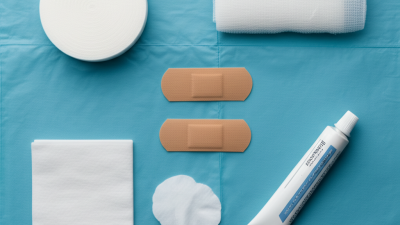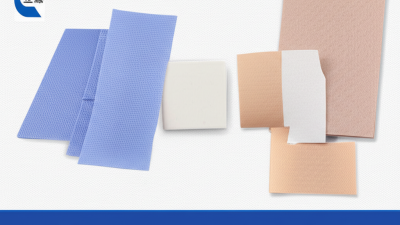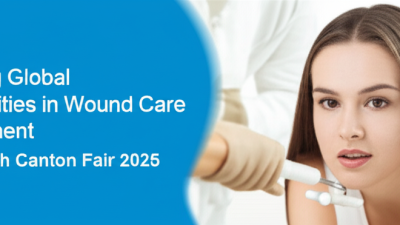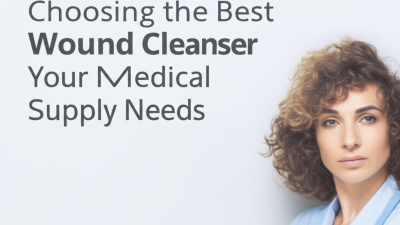Understanding the Importance of Quality Wound Care Supplies for Effective Healing
 Effective wound care is essential for promoting healing and minimizing complications,
particularly in clinical settings where the right products can significantly impact patient outcomes. According to the National Institute of Health, improper wound care leads to increased
infection rates and prolonged healing times, costing the healthcare system billions annually.
Quality Wound Care Supplies play a pivotal role in managing wounds effectively, providing
the necessary support for tissue regeneration and protecting against external contaminants. Reports indicate that hospitals using advanced wound care products see a
30% reduction in healing time compared to those relying on standard supplies. Thus, understanding the importance of quality wound care supplies
is critical for healthcare providers looking to enhance patient recovery and reduce healthcare costs.
Effective wound care is essential for promoting healing and minimizing complications,
particularly in clinical settings where the right products can significantly impact patient outcomes. According to the National Institute of Health, improper wound care leads to increased
infection rates and prolonged healing times, costing the healthcare system billions annually.
Quality Wound Care Supplies play a pivotal role in managing wounds effectively, providing
the necessary support for tissue regeneration and protecting against external contaminants. Reports indicate that hospitals using advanced wound care products see a
30% reduction in healing time compared to those relying on standard supplies. Thus, understanding the importance of quality wound care supplies
is critical for healthcare providers looking to enhance patient recovery and reduce healthcare costs.
The Link Between High-Quality Wound Care Supplies and Patient Recovery Rates
Quality wound care supplies play a critical role in enhancing patient recovery rates. Research indicates that the global wound care market is projected to reach approximately $14.16 billion by 2025, reflecting a compound annual growth rate (CAGR) of about 5.8% from 2023 to 2033. High-quality wound care products not only facilitate effective healing but also reduce the risk of infection, which can significantly impact recovery times. When patients are provided with superior materials, healing processes are expedited, leading to improved outcomes and shorter hospital stays.
To optimize wound care, consider the following tips:
- Assess the type and severity of the wound to choose the appropriate supplies. For instance, advanced dressings can promote moisture retention, which is essential for healing.
- Ensure that all supplies adhere to clinical standards; using low-quality materials can hinder healing efforts and lead to complications.
- Educate patients on the importance of following proper care instructions to maintain hygiene and protect the wound, reinforcing a holistic approach to healing.
Investing in quality wound care supplies is not just about compliance—it is about fostering an environment conducive to rapid and effective healing, supporting patients on their journey to recovery. By prioritizing the best products, healthcare providers can significantly elevate patient outcomes and satisfaction.
Key Statistics on Wound Infection Rates and Their Impact on Healing
The importance of quality wound care supplies cannot be overstated, especially in the context of rising wound infection rates that significantly impact healing outcomes. Recent statistics indicate a concerning trend in chronic wound infections, which have garnered attention due to their impact on healthcare costs and patient quality of life.
The global chronic wound care market is projected to grow from $15.27 billion in 2025 to $25.22 billion by 2032, with a compound annual growth rate (CAGR) of 7.4%. This growth underscores the critical need for effective wound management solutions that promote healing and prevent infections.
Particularly alarming is the rise in diabetic foot ulcers, which are expected to affect a growing number of individuals as diabetes prevalence continues to rise. By 2030, the estimated number of diabetes patients aged 20-79 in China alone will surpass 164 million, intensifying the demand for advanced wound care products.
Modern treatment options, which increasingly incorporate advanced materials and technologies, are necessary to address the complex needs of these patients and improve healing outcomes. A well-stocked first aid kit at home, aligned with guidelines from medical bodies, can play a crucial role in managing wounds effectively and reducing the risks of complications.
The Role of Advanced Dressings in Accelerating Wound Closure
Advancements in wound care technology have led to the development of advanced dressings that significantly enhance the healing process. One promising area is the use of electrospun nanofibers to create bioactive dressings that are particularly effective for chronic and acute wounds. These advanced dressings not only provide a protective barrier but also deliver therapeutic agents directly to the wound site, thus promoting accelerated healing.
Another exciting innovation is the creation of smart bandages equipped with integrated sensors and stimulators. These intelligent dressings can wirelessly monitor wound conditions and deliver targeted treatment based on real-time feedback. This closed-loop system represents a leap forward in personalized wound management, allowing for tailored care that adapts to the individual needs of each patient.
Moreover, the emergence of multifunctional hydrogels highlights the versatility of modern wound care supplies. These hydrogels exhibit excellent biocompatibility and bioactivity, and can actively promote healing in diabetic foot ulcers by combining antibacterial properties with the ability to combat oxidative stress. Collectively, these advanced dressings are transforming wound care, demonstrating the critical role of quality supplies in enhancing patient outcomes and facilitating effective healing.
Cost-Benefit Analysis: Investing in Premium Wound Care Supplies
When it comes to wound care, the supplies you choose can significantly impact the healing process. Investing in premium wound care supplies might seem costly initially, but a cost-benefit analysis reveals the long-term advantages of such an investment. High-quality supplies often speed up recovery times, reduce the risk of infection, and ultimately save money on follow-up treatments or additional medical interventions.
Tip: When selecting wound care products, consider their materials and intended use. For instance, advanced dressings made from hydrocolloids or transparent films not only provide superior moisture balance but also allow for easier monitoring of the wound without needing frequent changes.
Furthermore, quality wound care supplies can enhance patient comfort and promote better outcomes. Patients are more likely to adhere to their care regimens when they experience less pain and irritation.
Tip: Look for products with features like breathability and flexibility, which help reduce discomfort and encourage mobility. Investing in such supplies minimizes complications and leads to faster returns to daily activities.
Emerging Technologies in Wound Care: Improving Outcomes and Efficiency
Emerging technologies are revolutionizing the landscape of wound care, leading to enhanced healing outcomes and increased efficiency in medical settings. Advanced modalities such as bioengineered skin substitutes and smart dressings are gaining prominence, offering tailored treatment options that cater to the unique needs of each patient. These innovations not only promote faster wound healing but also reduce the risk of infection, significantly improving the overall patient experience.
In addition to these products, the integration of digital health solutions is transforming wound management practices. Telehealth platforms provide real-time monitoring of wounds, allowing healthcare professionals to make timely interventions without necessitating frequent clinic visits. Furthermore, data analytics tools enable practitioners to assess healing progress and adjust treatment plans based on individual patient data, optimizing their care strategy.
As these technologies continue to evolve, the future of wound care looks promising, underscoring the critical role of quality supplies and innovative approaches in achieving better patient outcomes.
Related Posts
-

Top 10 Wound Care Supply Manufacturers from China at the 137th Canton Fair
-

Finding Top Suppliers for Best Wound Cleansing Solutions in the Global Market
-

Global Buyers Discover New Wound Care Supply Innovations at Guangzhou Trade Fair 2025
-

Unlocking Global Opportunities in Wound Care Management at the 137th Canton Fair 2025
-

Ultimate Checklist for Choosing the Best Wound Cleanser for Your Medical Supply Needs
-

Top Contenders for Best Wound Protection Comparing Features and Benefits
